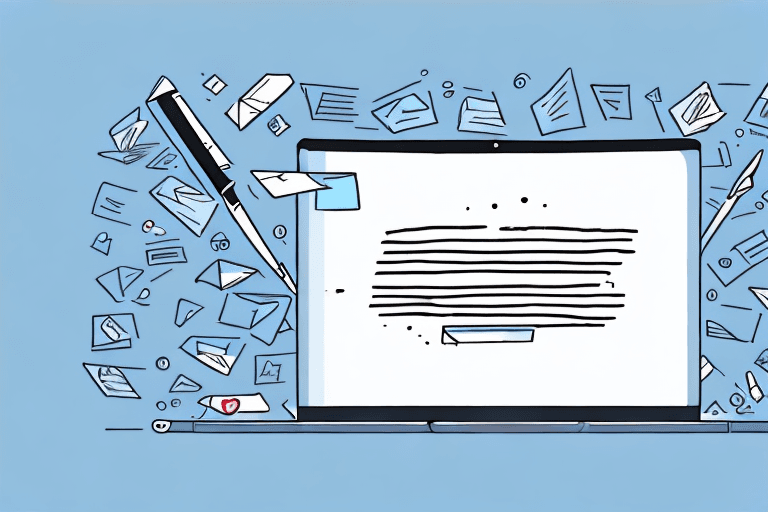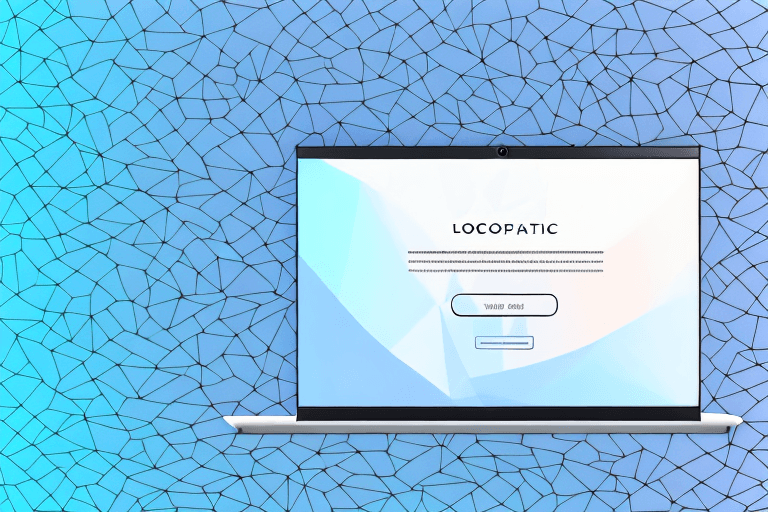In today's fast-paced business world, time is a precious commodity. That's why, when it comes to making a sales pitch, the effectiveness of your proposal email can make all the difference. An email that is well-crafted and personalized can grab your prospect's attention, build credibility, and ultimately lead to a successful sale.
Understanding the Importance of a Proposal Email Template
Before we dive into the components of a great proposal email, it's important to understand why having a template is crucial. First and foremost, a proposal email template ensures that you're creating a consistent message that is aligned with your brand and your value proposition. It also saves you time and energy in the long run, allowing you to focus on the content of the proposal itself.
Why a well-crafted proposal email is crucial
A proposal email is your chance to make a good first impression. In today's world, people receive hundreds of emails per day, so your proposal email needs to stand out in order to be taken seriously. It's essential that you carefully consider each aspect of your email to ensure that every element aligns with your overall message and helps to move your prospect towards a positive decision.
When crafting a proposal email, it's important to keep in mind that you're not just selling a product or service, you're also selling yourself and your company. This means that your email should be professional, concise, and engaging. Make sure to highlight your unique selling points and explain how your product or service can solve your prospect's pain points.
Another important aspect of a well-crafted proposal email is personalization. Take the time to research your prospect and customize your email to their specific needs and interests. This will show that you've done your homework and are genuinely interested in helping them solve their problems.
The role of a proposal email in the sales process
The proposal email is the first step in the sales process. It's a chance for you to introduce yourself, provide a brief overview of your product or service, and explain how it can benefit the prospect. By crafting a compelling and informative proposal email, you can establish yourself as an authority and build trust with your prospect.
Once you've sent your proposal email, it's important to follow up in a timely manner. This shows that you're proactive and interested in working with the prospect. Make sure to address any questions or concerns they may have and provide additional information if needed.
Remember, the goal of a proposal email is to start a conversation and move the prospect towards a positive decision. By taking the time to craft a well-thought-out email, you can increase your chances of success and ultimately close more deals.
Key Components of an Effective Proposal Email Template
Now that we've established the importance of a proposal email and why having a template is crucial, let's take a closer look at the key components that make up an effective proposal email template. Remember, each of these elements should be carefully considered and crafted with your prospect in mind.
When it comes to creating a successful proposal email, there are a few additional components to consider. These can help to make your email stand out from the competition and increase your chances of success.
Subject line: Grabbing attention from the start
Your subject line is the first thing your prospect will see, so it's critical that it captures their attention and piques their interest. Your subject line should be clear, concise, and personalized whenever possible. Avoid generic subject lines such as "Proposal" or "Sales email," and instead, try to use something that's relevant to the prospect's business or industry.
For example, if you're pitching a new software tool to a marketing agency, your subject line could be "Revolutionize Your Marketing Strategy with Our Innovative Software."
Personalization: Making a connection with the recipient
Personalization is essential when it comes to crafting an effective proposal email. You should take the time to research your prospect and find out as much as you can about their business and their needs. Tailor your email to their specific situation, and use their name whenever possible. The more personalized your email is, the more likely it is that your prospect will take notice.
One effective way to personalize your email is to reference a recent news article or social media post that is relevant to the prospect's business. This shows that you've done your research and are genuinely interested in helping them achieve their goals.
Introduction: Setting the stage for your proposal
Your introduction should be brief and to the point. Start by thanking your prospect for their time, and then quickly move on to a compelling hook that explains what your proposal is all about. Keep in mind that your introduction needs to be interesting enough to encourage the prospect to keep reading.
One effective way to start your introduction is to ask a question that is relevant to the prospect's business or industry. For example, "Are you tired of struggling to keep up with your competitors' marketing strategies?" This immediately engages the prospect and encourages them to keep reading.
The proposal: Clearly outlining your offering
The body of your email should be devoted to explaining your product or service, and how it can benefit your prospect. Use clear and concise language, and avoid using industry jargon or technical terms that your prospect may not understand. Focus on the benefits of your offering, and explain why it is better than the competition.
One effective way to showcase the benefits of your offering is to use case studies or testimonials from satisfied customers. This provides social proof that your product or service is effective and can help to build trust with the prospect.
Call-to-action: Encouraging a response
Your call-to-action is the final element of your proposal email. Here, you should clearly state what you want the prospect to do next, whether it's scheduling a call, downloading a whitepaper, or signing up for a free trial. Make sure that your call-to-action is clear and easy to follow, and provide your contact information so that the prospect can easily get in touch with you.
One effective way to encourage a response is to offer a limited-time discount or special offer. This creates a sense of urgency and encourages the prospect to take action before the offer expires.
By following these key components and incorporating additional strategies, you can create a proposal email that is not only effective but also stands out from the competition. Remember to always keep your prospect in mind and tailor your email to their specific needs and interests.
Tips for Writing a Persuasive Proposal Email
Writing a persuasive proposal email can be a daunting task, but with the right approach, it can be a highly effective way to close more sales. In this article, we'll explore some tips for crafting a persuasive proposal email that will help you stand out from the competition and win more business.
Research your prospect and their needs
Before you start crafting your proposal email, it's crucial to take the time to research your prospect and their needs. This will help you tailor your proposal to specifically address their pain points and challenges, increasing the chances of a positive outcome.
Start by reviewing the prospect's website and social media profiles to get a sense of their business and industry. Look for any recent news or press releases that may provide insights into their current priorities and challenges. You can also use tools like LinkedIn Sales Navigator to gain additional insights into the prospect's background and interests.
Once you have a good understanding of the prospect's needs, you can begin crafting a proposal that speaks directly to their pain points and offers a compelling solution.
Use clear and concise language
When it comes to making a persuasive argument in your proposal email, clear and concise language is essential. Avoid using jargon and technical terms that your prospect may not understand, and focus on explaining the benefits of your offering in simple terms that anyone can understand.
One effective technique is to use the "so what?" test. For every feature or benefit you mention in your proposal, ask yourself "so what?" This will help you focus on the real-world impact of your offering and ensure that your language is clear and compelling.
Highlight the benefits, not just the features
While it's important to explain the features of your product or service, what really matters to your prospect are the benefits. How will your offering improve their business and solve their problems? Highlighting the benefits is essential when crafting a persuasive proposal email.
One effective technique is to use a "before and after" scenario. Paint a picture of the prospect's current situation and the challenges they are facing, then show how your offering can help them achieve a better future state. This will help the prospect visualize the benefits of your offering and make it more compelling.
Provide social proof and testimonials
Social proof and testimonials can be incredibly effective when it comes to convincing your prospect to take action. Include case studies, customer success stories, and testimonials in your proposal email to demonstrate that your product or service has already helped others in similar situations.
When selecting testimonials, look for ones that are specific and measurable. For example, a testimonial that says "we saw a 50% increase in revenue after using your product" is more compelling than one that simply says "we loved your product."
Follow up and nurture the relationship
Finally, don't forget to follow up and nurture the relationship after sending your proposal email. In many cases, it may take several touchpoints to close the sale, so make sure to stay in touch and provide value even if the prospect doesn't initially respond.
One effective technique is to send a personalized follow-up email a few days after sending your proposal. Reference specific points from your proposal and ask if the prospect has any questions or concerns. You can also provide additional resources or insights that may be helpful to the prospect.
By following these tips, you can craft a persuasive proposal email that stands out from the competition and helps you win more business.
Conclusion
Crafting an effective proposal email template is a crucial step in the sales process. By following the key components outlined in this article and using the tips we've provided, you can increase your chances of success and close more deals. Remember, the key to a successful proposal email is personalization, clear and concise language, and a compelling call-to-action. Good luck, and happy selling!




